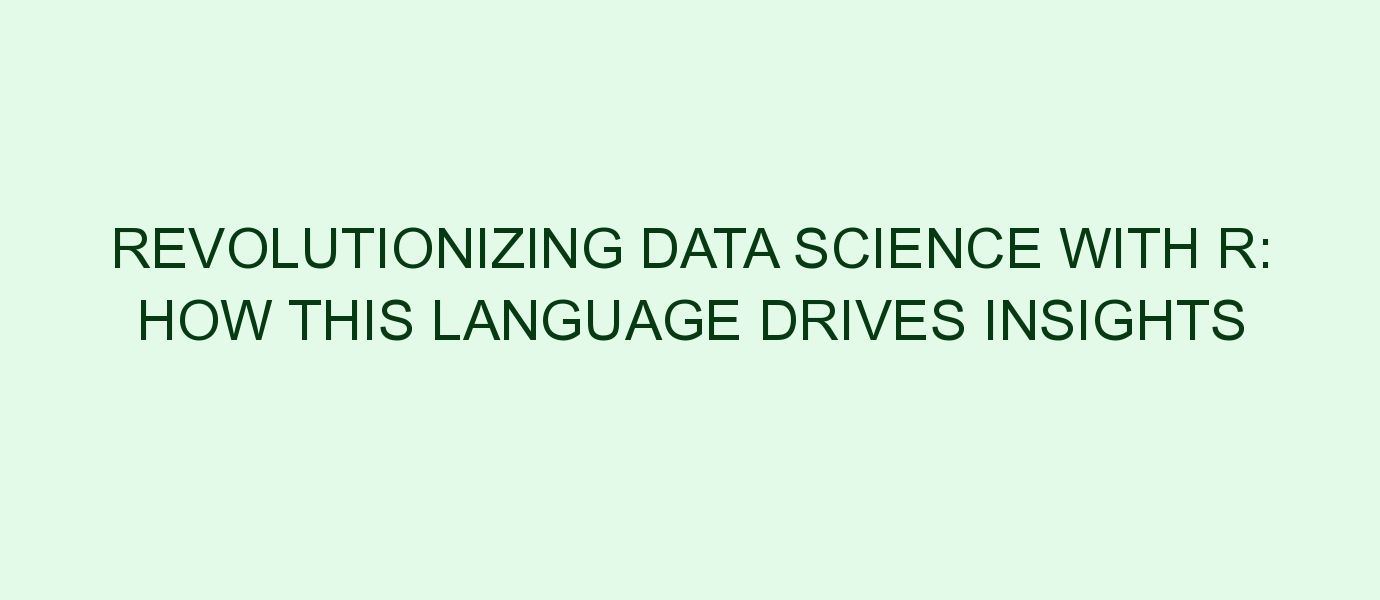R is a programming language and open-source software environment that is specifically designed for statistical computing and graphics. It offers a wide range of tools for data analysis, manipulation, visualization, and reporting. What sets R apart from other programming languages is its extensive library of packages and functions that are tailored for data science tasks, making it a powerful tool for researchers and data analysts.
One of the key reasons why R has been so successful in driving insights in data science is its flexibility and extensibility. With over 15,000 packages available in the Comprehensive R Archive Network (CRAN), R provides a vast array of tools for data manipulation, statistical modeling, machine learning, and more. This means that data scientists can easily access and utilize specialized tools and techniques for their particular projects, whether they are analyzing financial data, conducting medical research, or optimizing marketing campaigns.
Another advantage of R is its strong emphasis on visualization. R provides an extensive suite of tools for creating high-quality graphics and data visualizations, which are essential for communicating complex findings and insights to stakeholders. Whether it’s creating interactive dashboards, heat maps, or custom plots, R allows data scientists to present their findings in a visually compelling way.
Furthermore, R’s strong community of users and contributors has played a crucial role in its success. The open-source nature of R has led to a vibrant ecosystem of developers, statisticians, and data scientists who continuously contribute new packages, tools, and techniques to the R community. This collaborative effort has enabled R to stay at the forefront of data science and evolve with the latest trends and advancements in the field.
In addition, R’s integration with other programming languages and tools, such as Python, SQL, and Hadoop, makes it a versatile language that can be easily incorporated into existing data science workflows. This interoperability allows data scientists to leverage the strengths of different tools and languages while working on complex data analysis tasks.
As data science continues to evolve and grow in importance, the role of R in driving insights and innovation will only become more significant. Its flexibility, extensive library of packages, and strong community support make it a powerful language for tackling complex data science challenges in a wide range of industries. Whether it’s analyzing customer behavior, predicting market trends, or uncovering patterns in healthcare data, R is helping data scientists revolutionize the way we make sense of data and derive meaningful insights.
[ad_2]




